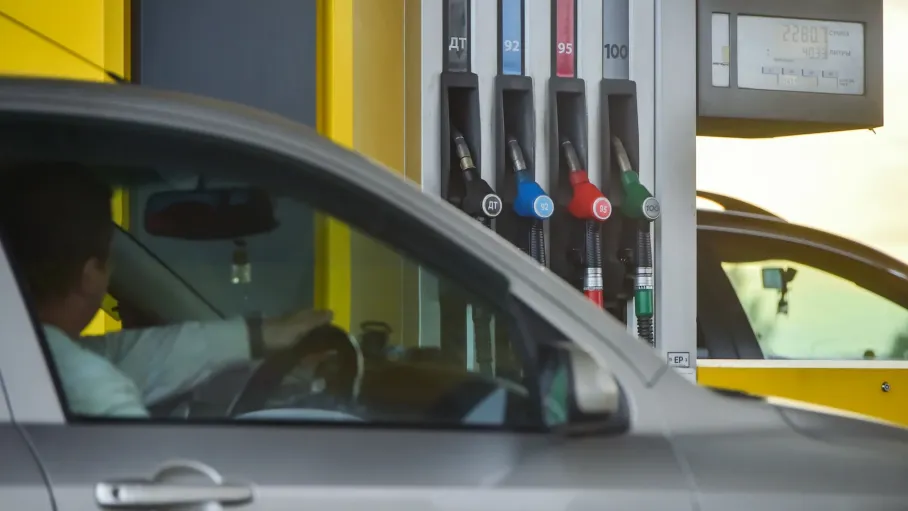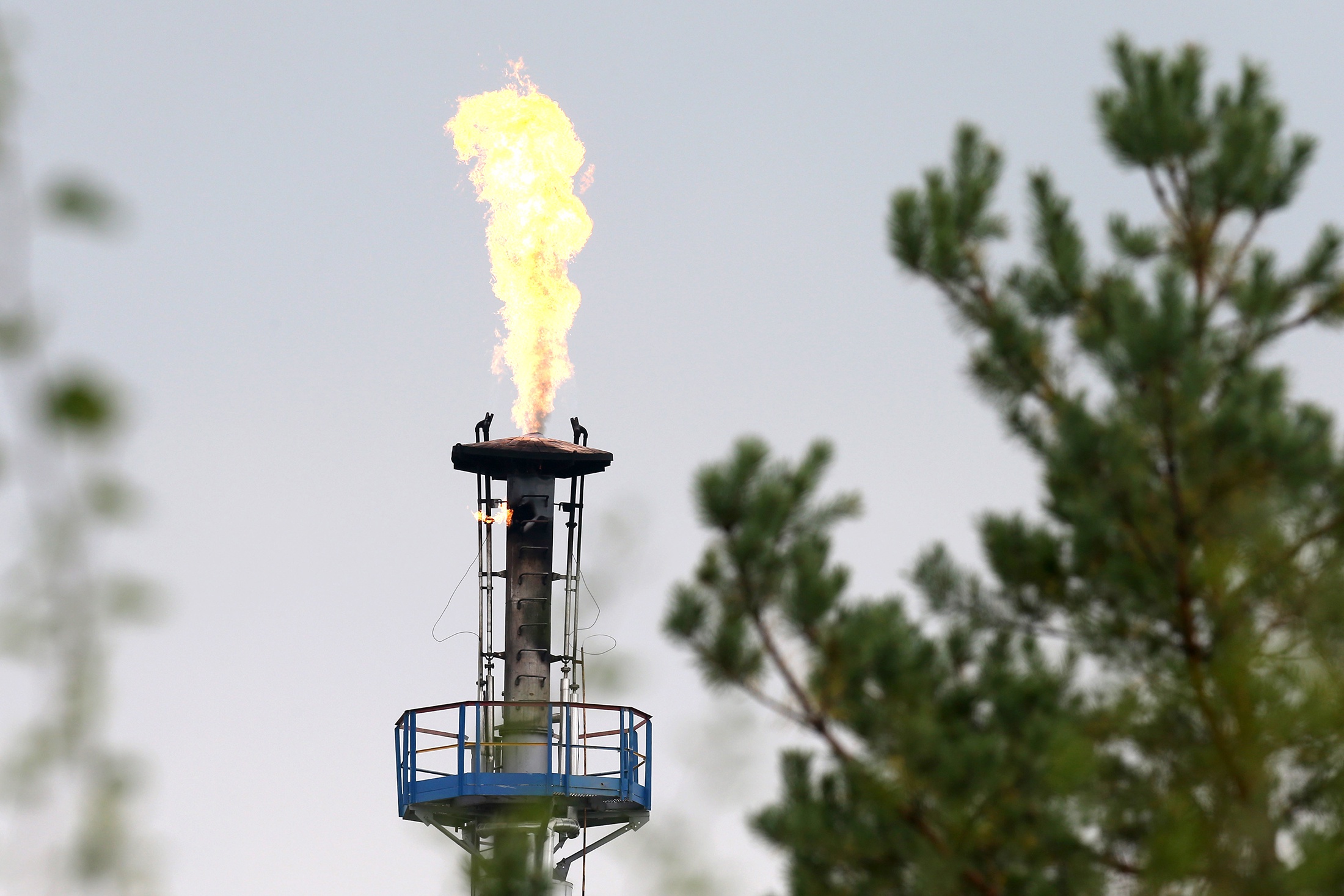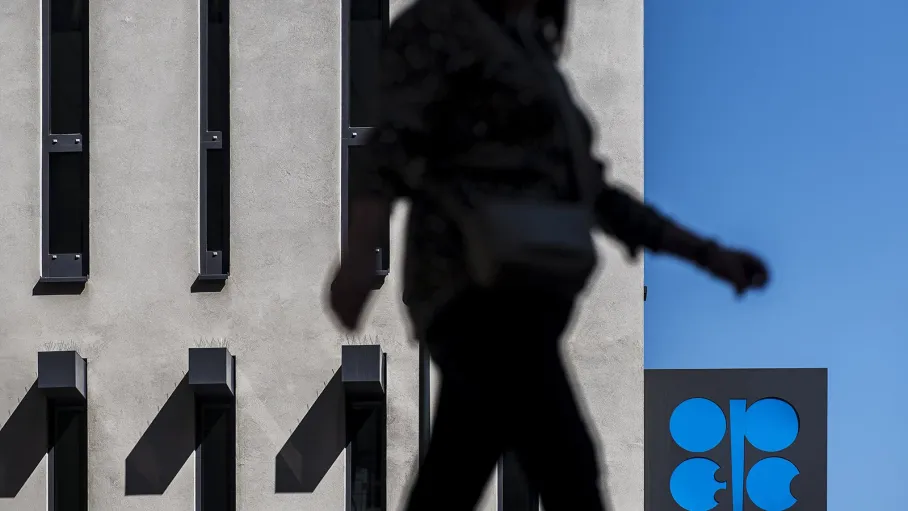On August 12, the price of AI-95 gasoline on the St. Petersburg exchange set a new record at 80,816 rubles per ton, exceeding the previous record of 76,876 rubles per ton, which was recorded in September 2023. AI-92 gasoline fell slightly short of the September 2023 record of 70,508 rubles per ton, rising to 70,293 rubles on August 12. From January 9 (the first trading day of this year) to August 12, AI-92 increased by 33% (up from 52,873 rubles per ton), while AI-95 rose by 46% (up from 55,060 rubles per ton).
In retail, the increase is significantly lower. According to the latest published data from Rosstat, as of August 4, AI-92 gasoline at gas stations averaged 57.99 rubles per liter, up 5.1% since the end of the previous year. AI-95 gasoline has risen by 4.8% to 63.25 rubles per liter over the same period. The growth in retail prices has not exceeded inflation, which stood at 8.77% from the beginning of the year to August 4. The Federal Antimonopoly Service (FAS) is monitoring to ensure that fuel prices do not rise disproportionately.
Gasoline prices have increased despite the government's ban on exports from August 1 to 31. Previously, this ban only applied to traders and small refineries but has since been extended to major producers. “This decision was made to maintain stability in the domestic fuel market during the period of high seasonal demand and agricultural fieldwork,” stated the government decree.
On August 8, the Ministry of Energy published a statement on its Telegram channel indicating that the internal market for all grades of automobile gasoline is fully supplied, with production and shipments consistently exceeding last year's levels. The ministry acknowledged that there were “unscheduled repairs” that led to a reduction in gasoline production and promised to compensate for these volumes in the coming days. “Restorative work is being conducted at an accelerated pace, reserve primary and secondary processing units are being introduced, and the volume of primary oil processing and fuel production is being increased at several refineries,” the statement noted. “In light of the export ban on gasoline, any additional volume of fuel supply will be directed to the domestic market through all sales channels — with priority given to exchange sales and small wholesale ‘in the market’.” Forbes reached out to the Ministry of Energy for further comments but did not receive a response by the time of publication.
Drone Attacks
Experts interviewed by Forbes noted that gasoline prices initially began to rise due to seasonal demand coinciding with planned repairs at several refineries. However, they pointed out that the price increase accelerated, particularly as a result of drone attacks on some facilities.
There is no publicly available information regarding refinery repairs, says Sergey Tereshkin, CEO of the fuel marketplace Open Oil Market. “However, one indicator suggests a temporary reduction in oil product production: according to data from S&P Global Platts, marine exports of these products from Russia decreased from 2.36 million barrels per day (b/d) in June 2025 to 2.10 million b/d in July,” he noted. “The July figure became the lowest in the last 12 months, even though the ban on gasoline exports came into effect only at the beginning of August.”
The specifics of what the ministry means by unscheduled repairs are unclear, but it seems these issues might also be linked to drone attacks on refineries, cautiously articulates Dmitry Skria bin, portfolio manager at Alfa Capital Management Company.
According to Reuters, the Ryazan Oil Refinery (part of Rosneft) and Novokuibyshevsk Refinery ceased operations at several oil processing units following drone strikes on August 2. Unnamed sources reported that repairs at these facilities could take about a month. In 2024, Ryazan Oil Refinery processed about 262,000 b/d, and Novokuibyshevsk Refinery processed approximately 115,000 b/d, according to Reuters. Therefore, their shutdown reduces daily processing by 377,000 barrels of oil, or 7%. According to Bloomberg estimates, based on industry data, that Russia currently processes more than 5 million b/d of oil. According to Deputy Prime Minister Alexander Novak, primary oil processing last year amounted to 266.5 million tons (approximately 5.3 million b/d), decreasing by 3% from 2023.
Bloomberg reported that another Rosneft facility, the Saratov Oil Refinery with a capacity of 140,000 b/d, ceased oil processing after a drone attack on August 10. It was also reported that a fire occurred due to debris falling on the Afipsky Oil Refinery in Krasnodar Krai, which has a processing capacity of 180,000 b/d, though no damage assessment has been provided for the facility.
“Russian sources do not provide estimates of the damages incurred by the refineries, but if the damage reported by foreign media is accurate, this could create a certain market frenzy, especially amid the seasonal fieldwork and the peak demand from the populace,” believes independent analyst Maxim Shaposhnikov. “However, in past instances of attacks on refineries, their operational capabilities were restored relatively quickly.”
Internal consumption is fully covered by production volumes, achieved through the export ban, but local shortages may have arisen, says Ekaterina Kosareva, managing partner at the analytical agency VMT Consulting. “The coverage is calculated on a national scale,” she notes. “However, due to the damage to refineries following drone strikes, local shortages may occur. Specifically, in Russia's granary, Krasnodar Krai, the Afipsky Refinery, which supplies agricultural enterprises with gasoline, has been damaged. August and September are peak demand periods due to the harvesting campaign. Additionally, it is necessary to supply gasoline to auto tourists. Consequently, prices are rising to cover logistical costs aimed at addressing shortages.”
“Oil Companies Continue to Hold Prices”
There is another reason as well — the oil companies themselves are limiting gasoline supply to the market. Since 2019, Russia has implemented a damping mechanism aimed at ensuring stability in domestic fuel prices. The damper is calculated based on the difference between the export price of gasoline and its indicative domestic price, which is legislatively established. When exports become more profitable than domestic market supplies, the state compensates producers for the difference; conversely, companies must make payments to the budget. The export price is based on the Rotterdam gasoline price, while the domestic price is a fixed threshold of 60,450 rubles per ton. The damper is nullified if wholesale prices for gasoline and diesel exceed indicative prices by more than 10% on average over a month.
Gasoline prices in Rotterdam have decreased this year following a decline in oil prices. Tereshkin from Open Oil Market states. Finance Minister Anton Siluanov reported that the volume of payments to oil companies under the damping mechanism in 2025 is expected to be 2.6 trillion rubles, which is 1.4 trillion rubles less than originally planned. “Prices have fallen; correspondingly, revenues have decreased, and we will return less to oil producers,” he said.
“Due to the decline in global oil prices, extracting companies missed about 277 billion rubles under the damping mechanism in the first six months of 2025 compared to the same period last year,” says Ekaterina Kosareva from VMT Consulting. “To compensate for losses, oil companies continue to hold prices and refrain from flooding the exchange with additional fuel volumes to avoid further declines and, consequently, losses.”
Tereshkin points out that when calculating government subsidies under the damper, only exchange quotes for AI-92 gasoline are taken into account, which are unrelated to AI-95 pricing. “Thus, the price increase in this segment does not entail a loss of subsidies, meaning that in the coming weeks, exchange prices for AI-95 will remain near 80,000 rubles per ton,” the expert believes. “There are simply no other ways for oil producers to compensate for the reduction in subsidies [for AI-92].” This implies that the loss of subsidies on one type of gasoline is compensated by high prices on another.
Shaposhnikov also tends to think that major vertically integrated oil companies (VIOC) have decided to increase their revenues. Additionally, he proposes that VIOC may be raising prices in anticipation of an expansion of their own gas station networks. “Today, [due to the FAS stance] selling gasoline at gas stations incurs a loss for owners of 1.2 rubles per liter for AI-92 to 1.4 rubles per liter for AI-95,” he shares. “This situation may prompt owners of independent filling stations to seek buyers for their assets, allowing VIOC to acquire them at a relatively low price. Meanwhile, the VIOC are prepared to absorb these losses, earning on extraction and refining while also receiving partial compensation through the sale of food and household goods at gas stations.”
Shaposhnikov reminds us that Deputy Prime Minister Alexander Novak plans to hold a meeting on August 14 regarding the situation in the fuel market, the balance of supply and demand, as well as the prevention of retail price increases above the inflation rate. “Although, in all likelihood, the price movement on the St. Petersburg exchange is speculative, the ban on gasoline exports may be extended until the end of October when the holiday season will wane and most agricultural work will be completed,” the expert believes.
Source: Forbes



